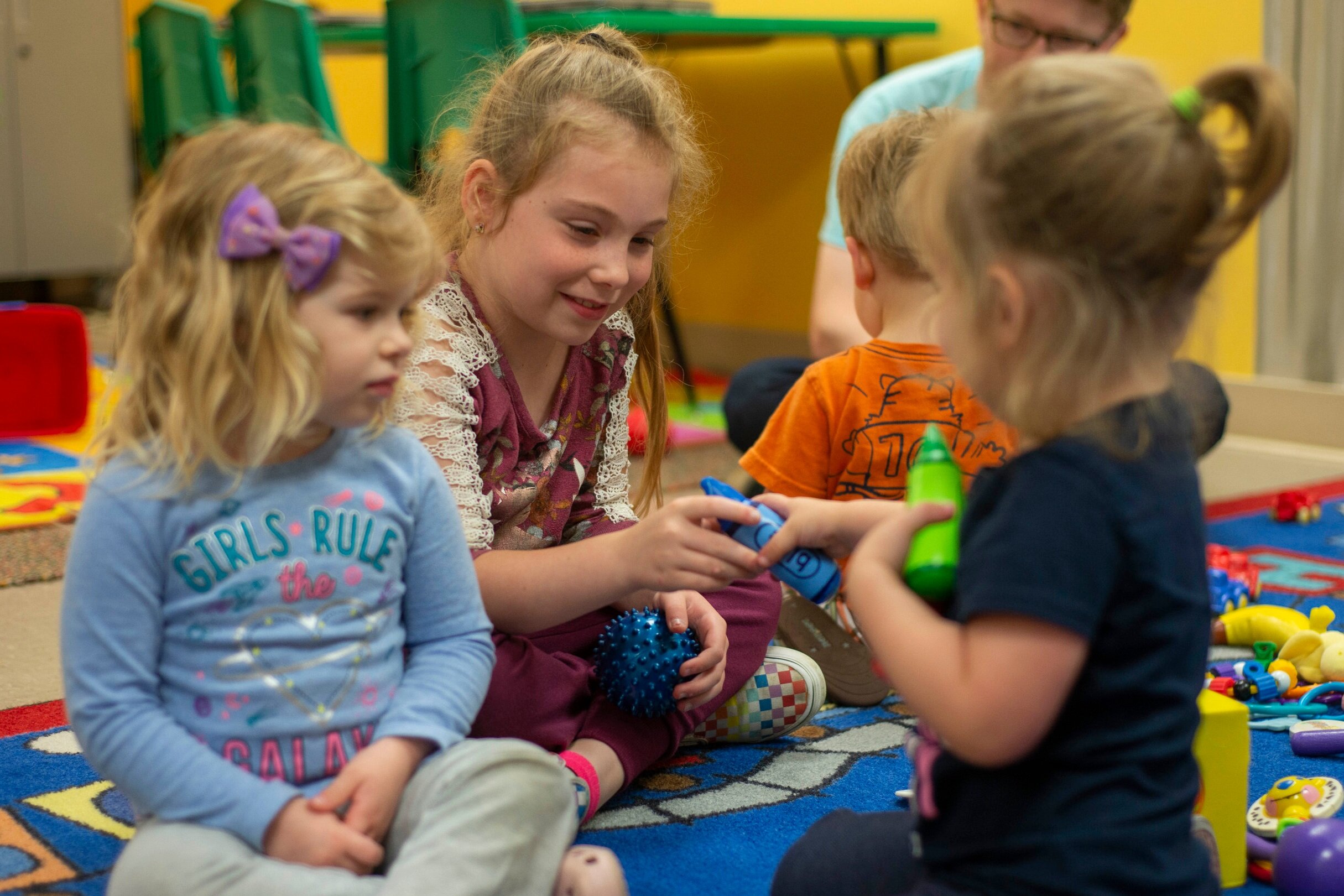Last week I told you about my granddaughter, Ruby, and I wanted to share another story this week about a recent “issue” she is having at daycare. She is almost two years old, but she was recently moved up to the next age-level class with kids who are a little older. To her parents’ horror, she has started biting the other children, mostly during free play time.
While biting and hitting are not okay and are certainly opportunities to teach about appropriate behavior, they are not unusual behaviors for young children to exhibit. These children are at a play stage where they want to play near each other and they want to play with the same toys, but they aren’t yet to the language development stage where they know how to negotiate for what they want. What often happens is they will go and tug the toy away from their friend, and this often results in frustration which, at this age, leads to biting.
Over the weekend, we had a visitor who brought his three-year-old little boy with him, and Ruby happened to be there, too. Ruby had a toy that he wanted, and I watched as he went and got her cup and took it to her. When she was preoccupied with it, he grabbed the toy he wanted. He has learned the developmentally appropriate art of negotiating.
(Post continues below.)
Children learn to play in stages. Have you noticed your two-year-old hanging back and just watching other children play, or a couple of two-year-olds playing only feet from each other but never really playing together? This is called the “spectator” or “parallel” stage of play. It is natural for us to want to teach children to interact and share during free play time, but going through the stages of play at the appropriate age is important for a child’s development later.
There are six widely agreed-upon stages of play for young children:
Unoccupied Play (Birth-3 months): A baby in this stage makes a lot of body movements, discovering how to move their body and arms and legs.
Solitary Play (Birth-2 years): A child seems totally content playing by themselves without the involvement of others.
Spectator/Onlooker Play (2 years): A child begins to watch others play, but still is content playing alone.
Parallel Play (2+ years): A child starts to play next to or alongside others, but does not necessarily join in.
Associative Play (3-4 years): A child starts to interact with others while playing; however, they may all still be doing different things.
Social/Cooperative Play (4+): A child becomes actively aware of children around them and begins playing with the other children involved.
It has been said that play is the work of children, and this is so true during the birth to 5-year-old timeframe. Children learn so much by exploring their world through play, but it’s important for us to teach them how to play appropriately.
Books are a fun, engaging way to teach children all about making friends, sharing toys, and playing well with others. A quick search on the internet will give a long list of books about play, but here are some of our favorites:
Join in and Play by Cheri J. Meiners
“It’s fun to make friends and play with others, but it’s not always easy to do. You have to make an effort, and you have to know the rules—like ask before joining in, take turns, play fair, and be a good sport. This book teaches the basics of cooperation, getting along, making friends, and being a friend. Includes ideas for games adults can use with kids to reinforce the skills being taught.”
How Do Dinosaurs Play With Their Friends? by Jane Yolen
“Time and time again, children are told to ‘play nice.’ This brilliantly illustrated board book is packed with rhymes that will teach children how. Mark Teague's laugh-aloud illustrations, along with Jane Yolen's playful text, will show children that "playing nice" can be easy and fun. Perfect for parents to read aloud with their children, this book is as humorous as it is instructive.”
How To Lose All Your Friends by Nancy Carlson
“With exuberant pictures and a tongue-in-cheek sense of humor, the author of I Like Me! takes a light-hearted look at bratty behavior that will have children laughing in recognition while learning exactly how not to behave. Colored-pencil illustrations throughout.”




